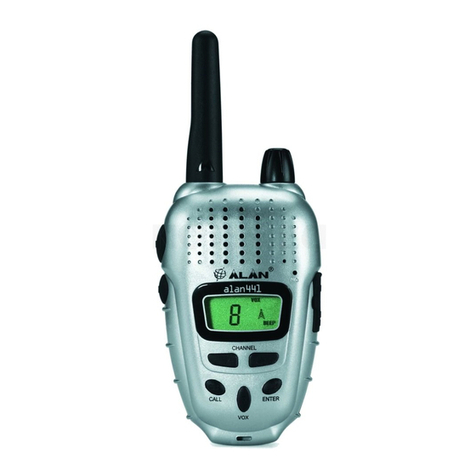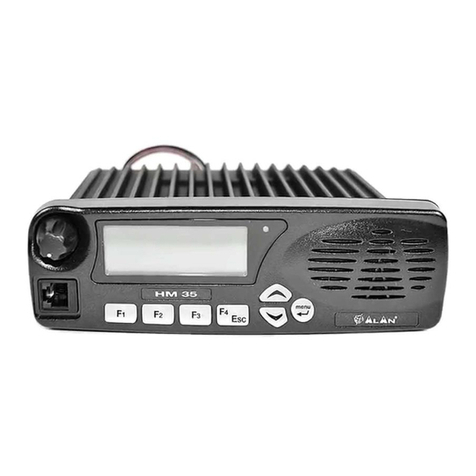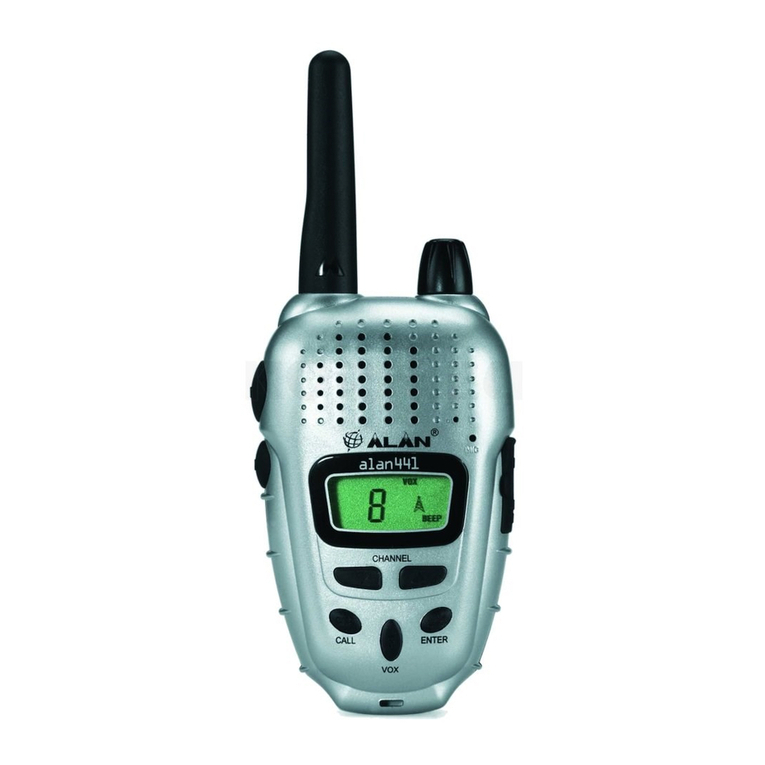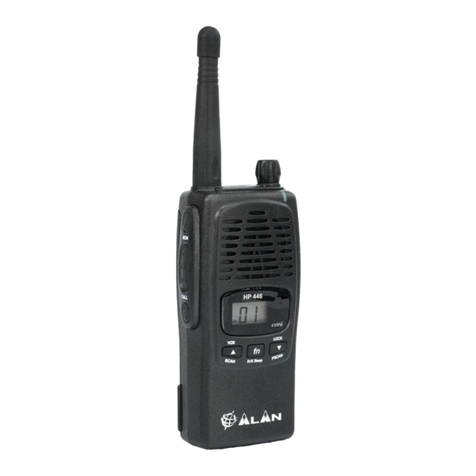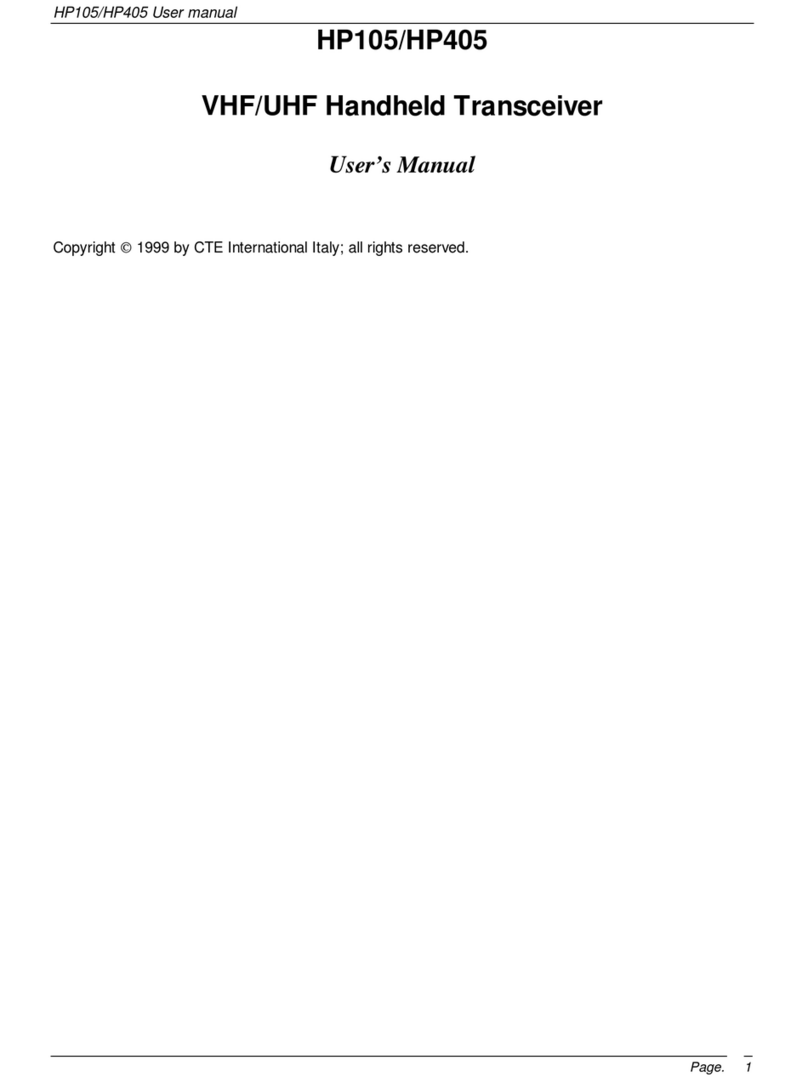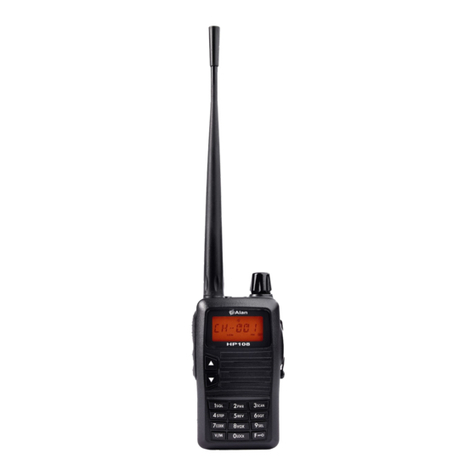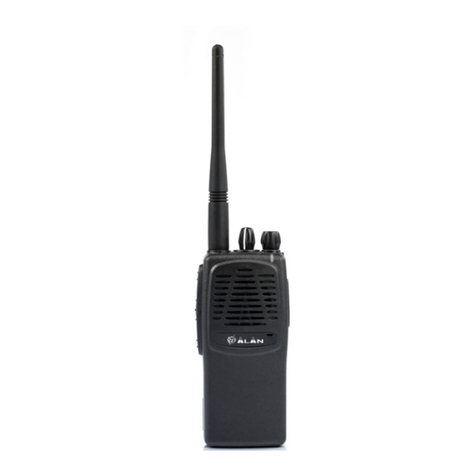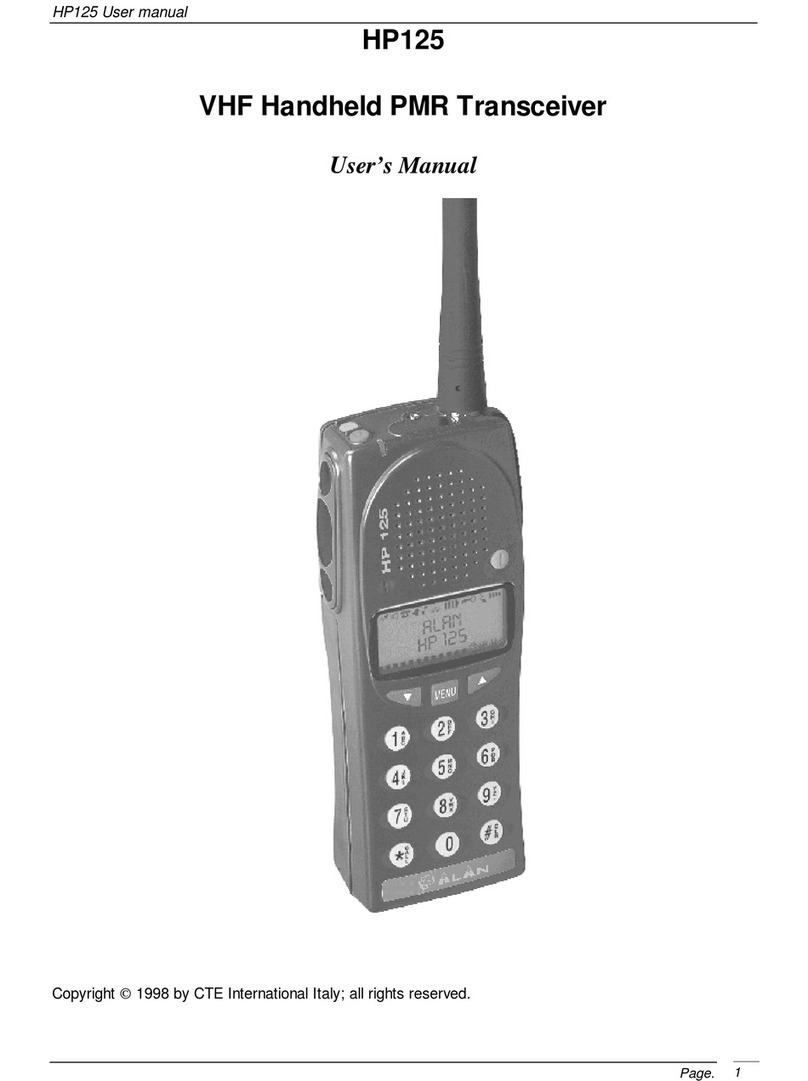Above all...safety!
regarding its operation arise, please contact your vendor or a
CTE International authorized service centre before using the
transceiver.
2.3 Security
Your portable ALAN HM35 transceiver is designed to give you
maximum security and reliability. As with all electrical devi-
ces, basic precautions should be followed in order to avoid
damage to other objects or to people - including yourself and
your radio. Please see the following precautions:
2.3.a General precautions
• This device is to be used solely as an aid to work performance. Its
settings may be affected by different factors, such as defects or
malfunction of the device, environmental conditions, or improper
use.
• It is important to read – and follow – all of the warning labels and
instructions placed on the device and its accessories.
• Do not open the transceiver for any reason, or attempt to repair it
(with the exception of the routine maintenance described in this
manual). Unauthorized opening of the transceiver will nullify the
warranty, and may cause damage which requires drastic repair
work. Please contact your local vendor for assistance.
• Do not let your radio get wet. If the transceiver happens to get
wet, dry it as soon as possible with a soft, clean cloth. If you think
liquid may have penetrated HM35’s housing, see your authorized
service centre as soon as possible.
• Only use original accessories; anything else may seriously damage
your transceiver.
• Turn off your radio before cleaning it. For cleaning, follow the in-
structions outlined in Chapt. 11.
• Pay attention to environmental conditions. Your radio was de-
signed to be used in extreme environmental conditions, though
excessive heat or cold should be avoided (outside the values of
the specifications outlined in Chapt. 14).
2.3.b Operating conditions/usage
• Do not use the radio when driving. Driving regulations expressly
prohibit the use of transceivers by drivers while the vehicle is in
motion.
• Do not operate the radio near shieldless explosives or in potential-
ly explosive environments (e.g., in the vicinity of gas stations). A
single spark may cause an explosion.
• Do not approach the transceiver’s antenna during transmission.
The radio functions at optimum levels when the microphone is
held at a distance of 5 to 10cm from the mouth, and when the
antenna is installed at the centre of the roof, in a vertical position
and free from obstacles.
2.3.c Installation
• Installation and removal of the radio should be carried out only by
experienced technicians. The information found in this manual are
meant solely as a complement to the experience held by the tech-
nician, who should assume full responsibility for the installation.
• This transceiver generates and irradiates electromagnetic energy








